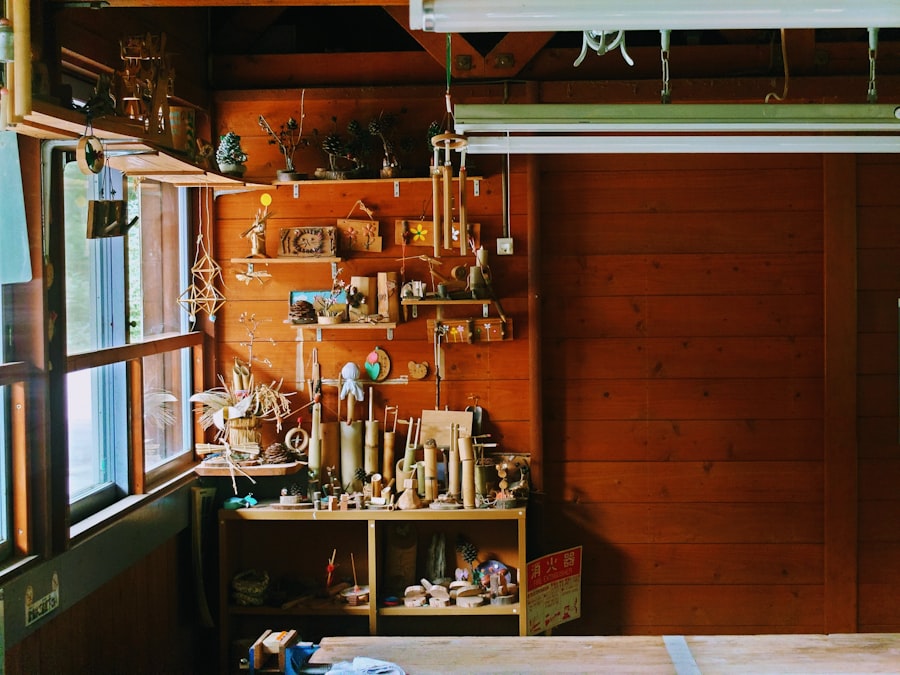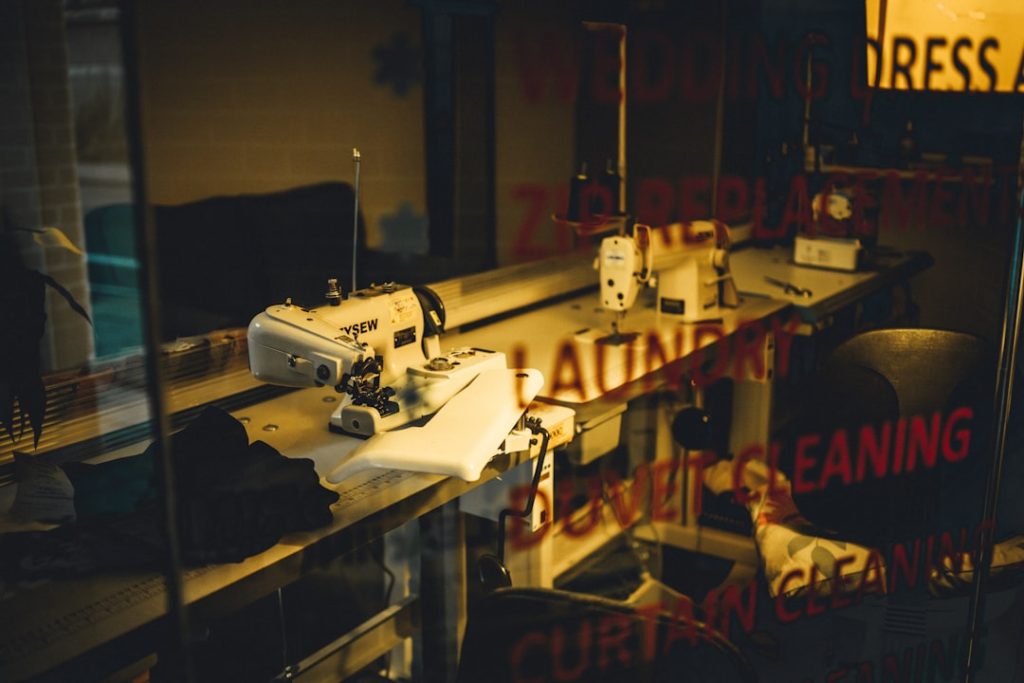Bespoke woodwork represents a unique intersection of artistry and craftsmanship, where each piece is tailored to meet the specific needs and desires of the client. Unlike mass-produced furniture, bespoke woodwork is characterized by its individuality, often reflecting the personal style and functional requirements of the homeowner. This form of woodworking has gained significant popularity in recent years, as more people seek to create spaces that are not only functional but also imbued with character and warmth.
The process of bespoke woodwork involves a deep understanding of both the material and the client’s vision, resulting in pieces that are not only beautiful but also practical. The allure of bespoke woodwork lies in its ability to transform ordinary spaces into extraordinary environments. Each project begins with a consultation, where the craftsman engages with the client to understand their preferences, lifestyle, and the specific challenges posed by the space.
This initial dialogue is crucial, as it sets the foundation for a collaborative design process that prioritizes both aesthetics and functionality. Whether it’s a custom kitchen cabinet, a unique bookshelf, or an intricate piece of furniture, bespoke woodwork allows for a level of personalization that is simply unattainable with off-the-shelf solutions.
Key Takeaways
- Bespoke woodwork involves creating custom, handcrafted pieces tailored to specific needs and styles.
- Selecting high-quality wood is crucial for durability and aesthetic appeal in custom cabinet design.
- Mastery of specialized tools and techniques is essential for precise and detailed bespoke woodwork.
- Functional design combined with aesthetic considerations ensures custom cabinets meet practical and visual requirements.
- Proper finishing, installation, and maintenance enhance the longevity and value of handcrafted custom cabinets.
Understanding Custom Cabinet Design
Custom cabinet design is a nuanced process that goes beyond mere aesthetics; it encompasses functionality, space optimization, and personal expression. The design phase typically begins with an assessment of the space where the cabinets will be installed. This involves taking precise measurements and considering factors such as ceiling height, existing architectural features, and the overall layout of the room.
A skilled designer will also take into account how the cabinets will be used daily, ensuring that they meet the practical needs of the household while also enhancing the visual appeal of the space. In addition to functionality, custom cabinet design allows for a wide range of stylistic choices. Homeowners can select from various styles, including traditional, modern, rustic, or eclectic designs.
Each style comes with its own set of characteristics—such as the choice of materials, finishes, and hardware—that contribute to the overall look and feel of the cabinets. For instance, a modern design might incorporate sleek lines and minimalistic hardware, while a traditional style may feature ornate moldings and rich wood finishes. The ability to customize every aspect of cabinet design ensures that the final product is a true reflection of the homeowner’s taste and lifestyle.
Selecting Quality Wood for Custom Cabinets

The choice of wood is one of the most critical decisions in the bespoke woodwork process, as it directly impacts both the durability and aesthetic appeal of custom cabinets. Different types of wood offer varying levels of strength, grain patterns, and color variations, making it essential for homeowners to understand their options. Hardwoods such as oak, maple, cherry, and walnut are often favored for their durability and rich visual characteristics.
Oak, for example, is known for its strength and distinctive grain patterns, making it an excellent choice for both traditional and contemporary designs. In addition to aesthetics and durability, sustainability is becoming an increasingly important factor in wood selection. Many craftsmen now prioritize sourcing wood from sustainable forests or using reclaimed materials to minimize environmental impact.
Reclaimed wood not only adds character to custom cabinets but also tells a story through its unique history. Homeowners who choose sustainable options can feel good about their purchase while also contributing to responsible forestry practices. Ultimately, selecting quality wood involves balancing personal preferences with considerations for longevity and environmental responsibility.
Tools and Techniques for Bespoke Woodwork
| Tool/Technique | Description | Common Use | Precision Level | Skill Required |
|---|---|---|---|---|
| Hand Plane | Used to smooth or flatten wood surfaces | Surface finishing | High | Intermediate to Expert |
| Chisels | Sharp tools for carving and shaping wood | Detail work and joinery | Very High | Expert |
| Router | Power tool for hollowing out areas in wood | Edge profiling and decorative cuts | Medium to High | Intermediate |
| Japanese Pull Saw | Fine-toothed saw that cuts on the pull stroke | Precise cuts and joinery | High | Intermediate |
| Mortise and Tenon Technique | Traditional joinery method for strong joints | Frame construction | Very High | Expert |
| Wood Lathe | Rotates wood for shaping symmetrical objects | Turning bowls, spindles, and legs | High | Intermediate to Expert |
| Sandpaper and Abrasives | Used to smooth and finish surfaces | Final surface preparation | Medium | Beginner to Expert |
| Clamps | Hold pieces securely during gluing or assembly | Assembly and drying | N/A | Beginner |
The art of bespoke woodwork requires a diverse array of tools and techniques that enable craftsmen to bring their visions to life. Traditional hand tools such as chisels, hand planes, and saws are often used alongside modern power tools like routers, table saws, and sanders. Each tool serves a specific purpose in the woodworking process; for instance, chisels are essential for detailed joinery work, while routers can create intricate edge profiles or hollow out sections of wood for inlays.
Techniques in bespoke woodwork vary widely depending on the desired outcome. Joinery methods such as dovetail joints or mortise-and-tenon joints are commonly employed to ensure strength and durability in cabinet construction. These techniques require precision and skill but result in joints that are not only functional but also visually appealing.
Additionally, advanced techniques like veneering allow craftsmen to apply thin layers of high-quality wood over less expensive substrates, creating stunning visual effects without compromising on cost or structural integrity.
Designing Functional and Aesthetic Custom Cabinets
Designing custom cabinets involves a careful balance between functionality and aesthetics. A well-designed cabinet should not only look good but also serve its intended purpose effectively. This means considering factors such as storage capacity, accessibility, and ease of use.
For example, incorporating pull-out shelves or lazy Susans can maximize storage space in corner cabinets, making it easier to access items that might otherwise be difficult to reach. Aesthetic considerations are equally important in custom cabinet design. The choice of colors, finishes, and hardware can dramatically alter the overall look of a space.
For instance, lighter finishes can create an airy feel in smaller rooms, while darker woods can add warmth and richness to larger spaces. Additionally, decorative elements such as crown molding or glass-front doors can enhance visual interest and elevate the overall design. By thoughtfully integrating both functional features and aesthetic details, bespoke woodworkers can create cabinets that are not only practical but also serve as stunning focal points within a room.
Finishing Touches: Staining, Painting, and Hardware

The finishing touches applied to custom cabinets play a crucial role in defining their final appearance and durability. Staining is a popular option for enhancing the natural beauty of wood while allowing its grain patterns to shine through. Different stain colors can evoke various moods; for example, a deep mahogany stain can impart a sense of elegance and sophistication, while a lighter stain may create a more casual and inviting atmosphere.
The application process requires skill to ensure an even finish without blotches or streaks. Painting is another option that offers homeowners greater flexibility in terms of color choices. A painted finish can completely transform the look of cabinets, allowing them to blend seamlessly with other elements in the room or stand out as bold statements.
When selecting paint for cabinetry, it’s essential to choose high-quality products designed specifically for furniture applications to ensure durability against wear and tear. Additionally, hardware selection—such as knobs, pulls, and hinges—can significantly impact both functionality and style. The right hardware can enhance the overall design while providing ease of use.
Installation and Maintenance of Custom Cabinets
The installation process for custom cabinets is a critical phase that requires precision and expertise. Proper installation ensures that cabinets are level, securely anchored to walls or floors, and aligned correctly with other elements in the room. This step often involves working with various tools such as levels, drills, and clamps to achieve a flawless fit.
A professional installer will also take care to protect surrounding surfaces during installation to prevent damage. Once installed, maintaining custom cabinets is essential for preserving their beauty and functionality over time. Regular cleaning with appropriate products can help prevent buildup from dust or grease—especially important in kitchen environments where cabinets are frequently exposed to cooking residues.
Additionally, periodic checks on hardware such as hinges or drawer slides can help identify any issues before they become significant problems. By following maintenance best practices, homeowners can ensure that their bespoke cabinets remain in excellent condition for years to come.
The Value of Investing in Handcrafted Custom Cabinets
Investing in handcrafted custom cabinets offers numerous benefits that extend beyond mere aesthetics or functionality. One significant advantage is the longevity associated with quality craftsmanship; bespoke cabinets are built to last using durable materials and time-tested techniques. Unlike mass-produced alternatives that may need replacement after a few years due to wear or damage, custom cabinets can withstand daily use while maintaining their beauty.
Moreover, custom cabinets often enhance property value by elevating the overall appeal of a home. Potential buyers frequently appreciate high-quality finishes and personalized designs that reflect care and attention to detail. In many cases, investing in bespoke cabinetry can yield a return on investment that far exceeds initial costs when it comes time to sell a property.
Ultimately, choosing handcrafted custom cabinets is not just about acquiring furniture; it’s about making a long-term investment in quality craftsmanship that enriches both living spaces and lifestyles.



